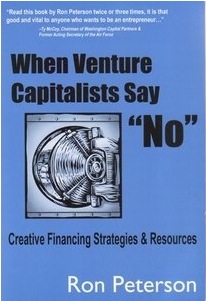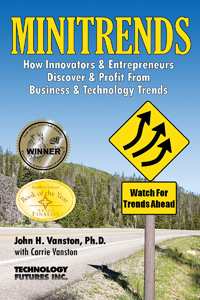Resources for Life Sciences Entrepreneurs and Venture Capitalists
by Steve O'Keefe on October 27, 2010
 While researching trends in longevity and their significance for start-up companies, I came across an extraordinary report by investment banker Ronald Peterson. Entitled “Technology Transfer and the Life-Sciences,” the report is chock-full of two things:
While researching trends in longevity and their significance for start-up companies, I came across an extraordinary report by investment banker Ronald Peterson. Entitled “Technology Transfer and the Life-Sciences,” the report is chock-full of two things:
1. Examples of companies who have licensed technology, then made a fortune off it.
2. Contact information for anyone pursuing similar ambitions.
A veteran venture capitalist, Peterson thinks it is too slow and too risky for biotechnology companies to develop their own proprietary technology:
Arguably the best way to form a new biotechnology company (or any technology company for that matter) is to transfer a technology that has already been largely developed and form a company by adding management, marketing and other needed talent.
Peterson’s formula for success is basically the blueprint for a Minitrends Adventure. First, locate a technology to exploit. Peterson provides links to dozens of sources, including exchanges where universities list thousands of technologies available for licensing. Next, attach that technology to your own entrepreneurial marketing team. Third, fund the operation with venture capital.
While venture capital is tight these days, it is not impossible to find. Peterson wrote a book in 2003 on how to find venture capital when markets are tight. The book is currently out of print, but available used through Amazon and other retailers. It’s called When Venture Capitalists Say “No”: Creative Financing Strategies and Resources.
Technology Transfer (TT) — the Minitrends route Peterson recommends — is also a winning strategy for the organizations that license their inventions to entrepreneurs. A study by the Milken Institute shows that universities reap $6 million in licensing fees for every $1 million spent on technology transfer operations.
This amazing article by Peterson, which is as long as a book, contains resource after resource, plus example after example to get you inspired. For example, Neven Vision licensed face recognition technology developed at the University of Southern California, secured $200,000 in venture capital funding, and later sold the firm to Google for $40 million. If this article doesn’t get your entrepreneurial blood boiling, you must be in cryonic suspension.
Ronald Peterson is president of Three Arrows Capital Corp., a U.S. investment banking firm that has helped fund hundreds of emerging high-growth companies. He has over 30 years of experience on Wall Street as either a vice-president or registered representative with companies such as Merrill Lynch and Paine Webber. He can be reached at Three Arrows Capital, 7517 Westfield Drive, Suite A, Bethesda, MD 20817; 301-229-6240; fax: 301- 229-5462; email: tarrows@comcast.net.
STEVE O’KEEFE
News Editor, Minitrends Blog
Source: “Technology Transfer and the Life-Sciences,” by Ron Peterson, 01/01/08
Cover image of When Venture Capitalists Say “No”: Creative Financing Strategies and Resources is used under Fair Use: Reporting.
Comments
Got something to say?













